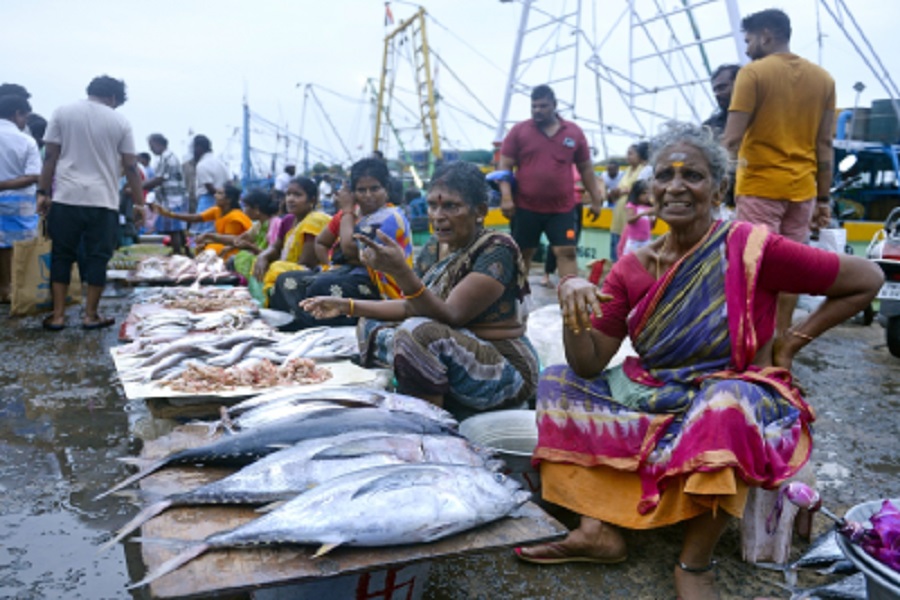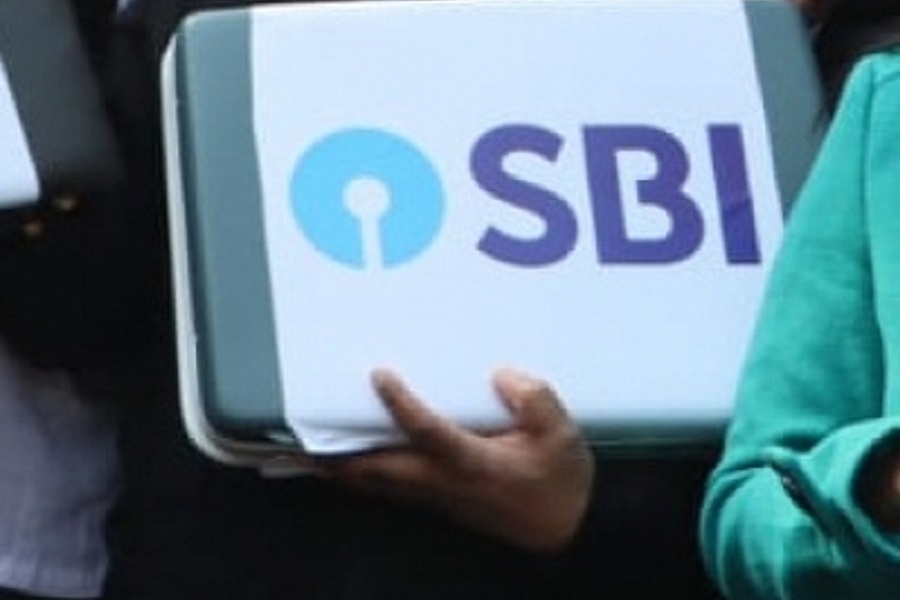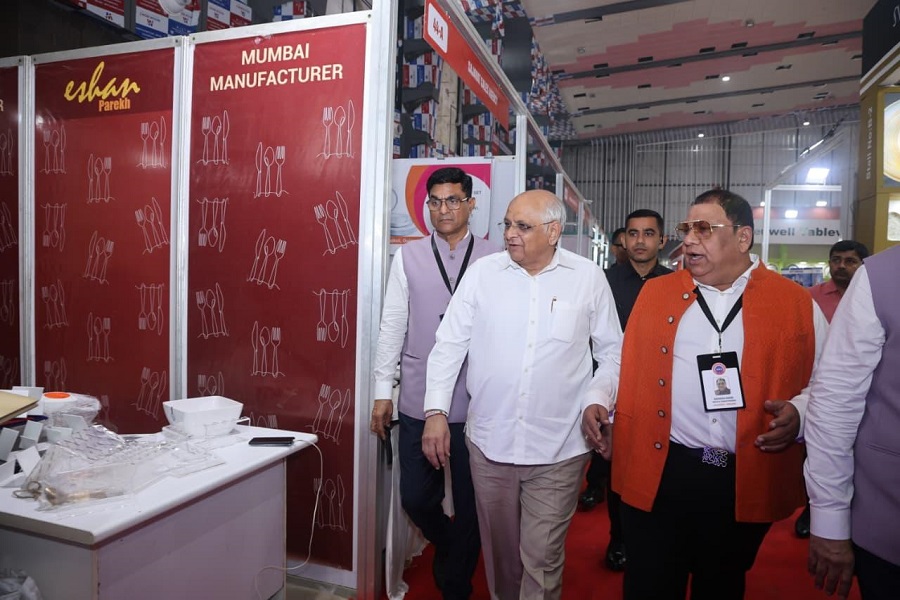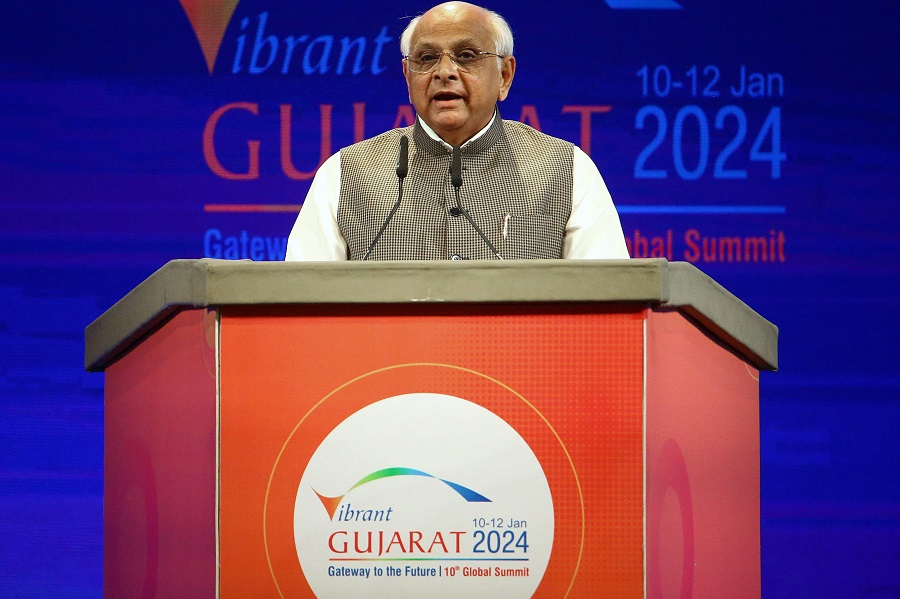ESAF Small Finance Bank coming with IPO to raise upto Rs 488.63 crore

ESAF Small Finance Bank
- ESAF Small Finance Bank is coming out with a 100% book building; initial public offering (IPO) of 8,14,38,933 shares of Rs 10 each in a price band Rs 57-60 per equity share.
- Not more than 50% of the issue will be allocated to Qualified Institutional Buyers (QIBs), including 5% to the mutual funds. Further, not less than 15% of the issue will be available for the non-institutional bidders and the remaining 35% for the retail investors.
- The issue will open for subscription on November 3, 2023 and will close on November 7, 2023.
- The shares will be listed on BSE as well as NSE.
- The face value of the share is Rs 10 and is priced 5.70 times of its face value on the lower side and 6.00 times on the higher side.
- Book running lead managers to the issue are ICICI Securities, DAM Capital Advisors and Nuvama Wealth Management.
- Compliance Officer for the issue is Ranjith Raj P.
Profile of the bank
The bank is a small finance bank with a focus on unbanked and under-banked customer segments, especially in rural and semiurban centres. As at June 30, 2023, the bank’s gross advances to its customers in rural and semi-urban centres (combined) accounted for 62.97% of its gross advances and 71.71% of its banking outlets were located in rural and semi-urban centres (combined). The bank’s primary products are its advances (asset products) and deposits (liability products). The bank’s advances comprise: (a) Micro Loans, which comprises Microfinance Loans and Other Micro Loans; (b) retail loans, which includes gold loans, mortgages, personal loans, and vehicle loans; (c) MSME loans; (d) loans to financial institutions; and (e) agricultural loans. Its liability products comprise current accounts, savings accounts, term deposits and recurring deposits. Its services includes safety deposit lockers, foreign currency exchange, giving its customers access to the Bharat Bill Payment System, money transfer services and Aadhaar Seva Kendra services. It also distributes third-party life and general insurance policies and Government pension products.
The bank has a network of 700 banking outlets (including 59 business correspondent-operated banking outlets), 767 customer service centres (which are operated by its business correspondents), 22 business correspondents, 2,116 banking agents, 525 business facilitators and 559 ATMs spread across 21 states and two union territories, serving 7.15 million customers as at June 30, 2023. While its operations are spread out across India, its business is concentrated in South India, particularly in the states of Kerala and Tamil Nadu. As at June 30, 2023, 62.43% of its banking outlets are located in South India (including 43.43% in Kerala and 13.86% in Tamil Nadu), 73.09% of its gross advances are from customers in South India (including 43.45% from Kerala and 22.14% from Tamil Nadu) and 86.90% of its deposits are from banking outlets in South India (including 80.04% from Kerala and 3.36% from Tamil Nadu).
The bank focuses on leveraging technology to deliver products and services and it continuously work towards improving its customers’ experience through the use of technology. It has crossed a technology milestone with the successful adoption of e-signatures for Micro Loan disbursals. In Fiscal 2023, it disbursed over 0.53 million loans using e-signatures. It offer its customers various digital platforms, including an internet banking portal, a mobile banking platform, SMS alerts, bill payments and RuPay branded ATM cum debit cards. Its customers are also able to register for its savings accounts on a unified payment interface based mobile applications. Its account opening and loan underwriting processes have been digitalised by using tablets. It has a digitalised central credit-processing unit for its Micro Loans. Its customer on-boarding process has been predominantly digitalised for its Micro Loans. It leverage technology for underwriting and credit sanctioning for its loan products based on inputs from credit bureaus and/or its customer data analytics.
Proceed is being used for:
- Augmenting the bank’s Tier – I capital base to meet its future capital requirements.
- Increasing the bank’s business, which is primarily onward lending.
- Meeting the expenses in relation to the Offer.
Industry Overview
Over the past decade, banking credit growth lagged systemic credit growth for several years as NBFCs grew at a much faster pace. However, the NBFCs suffered a blow after IL&FS defaulted in September 2018. NBFCs, not having the advantage of size, rating and/or parentage, had to grapple with a liquidity crisis and as raising funding became difficult. Initially, post the IL&FS crisis, banks were expected to fill the space left out by NBFCs. However, with slower economic growth and muted private capex, banking credit growth remained low at 6.8% in Fiscal 2020. In the fourth quarter of Fiscal 2020 and the first quarter of Fiscal 2021, with the outbreak COVID-19 pandemic, challenges had intensified for both banks and NBFCs. NBFCs were hit harder in terms of demand, and they also turned cautious as they lend to borrowers with relatively weaker credit profile. In the second half of Fiscal 2021, the Indian economy showed signs of improvement, the effect of which was seen in the credit growth. At the end of Fiscal 2021, the banking credit grew by 5% on year while NBFCs witnessed a growth of 7.3% during the same period. In Fiscal 2022, the second wave of the COVID-19 pandemic led to weak demand for credit in the first quarter of the year. However, the pace of credit recovered, with overall credit growing by 8.4% and retail credit increasing by 11.6% yearon-year as of March 2022.
The microfinance industry (JLG portfolio) has recorded healthy growth in the past few years. The industry’s AUM increased at a CAGR of 21% since March 31, 2018 to reach Rs 3.55 trillion as of June 30, 2023. In Fiscal 2021, the industry had been adversely impacted due to the onset of the COVID-19 pandemic. While disbursements came to a standstill in the first quarter of the year, they picked up subsequently. Disbursements reached to the pre-COVID levels for NBFC-MFI in the third and fourth quarter of Fiscal 2021. The second wave of COVID-19 led to a slow start in Fiscal 2022, however, the situation improved from the second half, as number of cases declined, and collections started improving. The revised regulation by the RBI, applicable from October 1 of 2022 (post revision), would give more flexibility to NBFC-MFIs and is expected to gain share from banks. The overall microfinance industry grew by 21% year on year in Fiscal 2023 on account of improved collection efficiency, steady demand and lower GNPA levels. Going forward, the overall microfinance industry will continue to see strong growth on back of government’s continued focus on strengthening the rural financial ecosystem, strong credit demand, and higher ticket sized loans disbursed by microfinance lenders.
Pros and strengths
Main focus on rural and semi-urban banking franchise: The bank’s main focus is on providing loans to customers in rural and semi-urban centres. Its customers in rural and semi-urban centres (combined) have increased from 3.00 million as at March 31, 2021 to 3.93 million as at March 31, 2023 and further increased to 4.07 million as at June 30, 2023. As at June 30, 2023, its gross advances to customers in rural and semi-urban centres (combined) were Rs 90,951.76 million, representing 62.97% of its gross advances. As at June 30, 2023, 4.07 million of its customers were in rural and semi-urban centres (combined), representing 56.92% of its total customers, and the number of banking outlets in rural and semi-urban centres (combined) was 502, representing 71.71% of its total banking outlets. It has developed an understanding of the rural and semi-urban households in the regions in which it operate. There are growth opportunities in rural centres in India as rural centres have lower financial inclusion compared with urban areas and there is thus less competition for banking services in rural centres compared with urban centres.
Customer connections driven by customer-centric products and processes: The bank aims to provide the best-in-class banking services to its customers, as its customers are the most important stakeholders in its business. Its products and services are designed to meet the various lifecycle needs of its customers, such as home loans, clean energy product loans, loans for agricultural activities, loans against property, personal loans, education loans, gold loans and vehicle loans. Its business correspondents collect cash repayments on its behalf and through regularly meeting with its Micro Loan customers, its business correspondents are better able to understand those customers’ requirements. Its business correspondents’ constant engagement with its Micro Loan customers helps to keep delinquencies in check. In addition to the provision of financial services, its business correspondents undertake various non-financial services, which include, among other things, conducting financial literacy programmes, livelihood programmes, entrepreneurship training programmes and community engagement programmes.
Technology-driven model with digital technology platform: The bank offers its customers various digital platforms, including an internet banking portal, a mobile banking platform, SMS alerts, bill payments and RuPay branded ATM cum debit cards. All banking and payment transactions, such as remittances and utility payments, can be completed through these platforms. Its customers are also able to register its savings accounts on a unified payment interface based mobile applications. Its account opening and loan underwriting processes have been digitalised by using tablets, which enabled it to reduce its turnaround time and offer better service to customers. CASA accounts can be opened through tablets, which enables it to provide doorstep services to its customers. By leveraging technology solutions, it provides customers with pre-generated kits immediately upon account opening, enabling them to use the ATM-cum-debit card provided with the pre-generated kits without having to wait for the ATM-cum-debit card to be activated across channels, thereby resulting in increased customer satisfaction. It has crossed a milestone in technology with the successful adoption of e-signatures for Micro Loan disbursals.
Growing retail deposits portfolio: The bank’s total deposits increased from Rs 89,994.26 million as at March 31 2021 to Rs 146,656.25 million as at March 31, 2023, representing a CAGR of 27.66%, and further increased to Rs 156,558.54 million as at June 30, 2023, an increase of 6.75%. It has placed an emphasis on increasing its Retail Deposits. Its Retail Deposits increased from Rs 87,963.84 million as at March 31, 2021 to Rs 133,230.03 million as at March 31, 2023, representing a CAGR of 23.07%, and further increased to Rs 139,772.67 million as at June 30, 2023, an increase of 4.91%. CASA tends to provide a stable and low-cost source of deposits compared to term deposits. Its CASA increased from Rs 17,476.45 million as at March 31, 2021 to Rs 31,374.47 million as at March 31, 2023, representing a CAGR of 33.99%, and decreased to Rs 28,519.70 million as at June 30, 2023, a decrease of 9.10%.
Risks and concerns
Face challenges in rural–focused Microfinance Loan business: The bank’s business is significantly dependent on Microfinance Loans. Microfinance Loans are made to the poorer sections of society (annual household income of up to Rs 0.30 million), because of which there are some inherent challenges faced by it in its Microfinance Loans business, especially in rural centres. Providing microfinance loans in rural India requires reaching people in remote and sparsely populated regions, where deploying manpower and requisite infrastructure for disbursing loans and for recovery can often be expensive. The high cost of reaching out to customers in rural centres, and the small volume and ticket size of microfinance loans elongates the breakeven period. If the bank is unable to control its costs, it could have an adverse effect on its business, financial condition, results of operations and cash flows. Its business correspondents are faced with the task of educating people about the benefits of financial inclusion, about the product and services offered by them, and establish trust before selling Microfinance Loans. If its business correspondents fail to educate potential borrowers about its Microfinance Loans, it could adversely affect its business, financial condition, results of operations and cash flows.
Subject to stringent regulatory requirements and prudential norms: The bank is regulated under the Banking Regulation Act and has to comply with circulars and directives issued by the RBI that apply to a small finance bank within the meaning of SFB licensing guidelines (SFB). The Banking Regulation Act limits the flexibility of shareholders and management of an SFB in many ways, including by way of specifying certain matters for which a banking company would require RBI approval. The RBI In-Principle Approval, RBI Final Approval, SFB Licensing Guidelines, SFB Operating Guidelines, the Recommendations of the Internal Working Group to Review Extant Ownership Guidelines and Corporate Structure for Indian Private Sector Banks dated November 26, 2021, Reserve Bank of India (Acquisition and Holding of Shares or Voting Rights in Banking Companies ) Directions, 2023 and Reserve Bank of India Guidelines on Acquisition and Holding of Shares dated January 16, 2023 requires it to comply with certain conditions in order to operate its business. In addition, in the past, there have been certain instances of ATM cash-out penalties aggregating to Rs 0.05 million imposed by the RBI for any ATM being out of cash for more than 10 hours in a month under the provision of the Banking Regulation Act, 1949 and the RBI circular titled ‘Monitoring of Availability of Cash in ATMs’ dated August 10, 2021. It has made the payments in respect of such penalties imposed.
Require to maintain minimum CRR and SLR: The bank is currently required to maintain a CRR of a minimum of 4.50% of its demand and time liabilities with the RBI, on which no interest is paid. Due to the COVID-19 pandemic, from the fortnight beginning on March 27, 2021, the RBI raised the minimum CRR from 3.00% to 3.50% of net demand and time liabilities, which was revised to 4.00% from the fortnight beginning on May 22, 2021, and further revised to 4.50% from May 21, 2022. Further, the RBI vide its circular dated August 10, 2023 directed banks to maintain an incremental CRR (I-CRR) of 10% on the increase in net demand and time liabilities between May 19, 2023 and July 28, 2023. The RBI reviewed the I-CRR on September 8, 2023 and decided to discontinue the I-CRR in a phased manner. The release of funds is as follows: (i) September 9, 2023 – 25% of the I-CRR maintained; (ii) September 23, 2023 – 25% of the I-CRR maintained; and (iii) October 7, 2023 – 50% of the I-CRR maintained. It is also currently required to maintain a SLR equivalent to 18.00% of its net demand and time liabilities in cash and invested in Government and other RBI-approved securities.
Face liquidity risks due to mismatches in maturity of assets and liabilities: The bank faces liquidity risks due to mismatches in the maturity of its assets and liabilities. It may rely on funding options with a short-term maturity period for extending long-term loans, which may lead to an asset liability mismatch for certain periods. Mismatches between its assets and liabilities are compounded in case of pre-payments of the advances it grant to its customers. Further, asset liability mismatches create liquidity surplus or liquidity crunch situations and depending upon the interest rate movement, such situations may adversely affect its Net Interest Income. Although it has implemented procedures and policies that are designed to mitigate its liquidity risks, if it is unable to obtain additional borrowings or renew its existing credit facilities for matching tenures of its loan portfolio in a timely and cost-effective manner or at all, it may lead to mismatches between its assets and liabilities, which could adversely affect its financial condition, results of operations and cash flows.
Outlook
ESAF Small Finance Bank (ESAF SFB) the new age social bank continues to redefine the banking experience to all the stakeholders. It primarily focuses on expanding the banking horizon to new unbanked/underbanked area, yet it stands as a bank for all with presence in urban, semi urban, rural and rural unbanked areas. The bank offers a host of modern banking services like ATMs, Debit Cards, Safe Deposit Lockers, Internet Banking, Mobile Banking, Agent Banking, SMS Banking, RTGS, NEFT, CTS, etc. The doorstep delivery services, free video calling facility at branches and Hrudaya Fixed Deposit Scheme are some of the exclusive features offered by ESAF Small Finance Bank. As an organization, it strives for financial peace by bridging the gap between the haves and the have-nots. A unique deposit scheme of ESAF Small Finance Bank, namely Hrudaya deposit scheme, as the name suggests, stands for a social cause, through which, the Bank provides the customers an opportunity to be a part in economic development of the bottom of the pyramid. As an organization it strives for financial peace by bridging the gap between the haves and the have-nots. On the concern side, the bank offers online banking services to its customers. Its online banking channel includes multiple services, such as funds transfer, balance enquiry, bill payment, online payment for certain services and payment of direct and indirect taxes. In addition, it also face the risk of its customers incorrectly blaming it and terminating their accounts with it for any cyber security breaches that may have occurred on their own system or with that of an unrelated third party.
The issue has been offered in a price band of Rs 57-60 per equity share. The aggregate size of the offer is around Rs 464.20 crore to Rs 488.63 crore based on lower and upper price band respectively. On the performance front, the bank’s total income increased by Rs 9,940.64 million, or 46.29%, to Rs 31,415.72 million for Fiscal 2023 from Rs 21,475.08 million for Fiscal 2022. The bank’s net profit increased by Rs 2,476.01 million, or 452.39%, to Rs 3,023.33 million for Fiscal 2023 from Rs 547.32 million for Fiscal 2022. Meanwhile, the bank intends to deepen its distribution within the states and union territories it operates in by opening additional Branches, having business correspondents open more customer service centres and business correspondent-operated banking outlets and encouraging them to enter into agreements with more banking agents, entering into relationships with new business correspondent entities and business facilitators and adding ATMs. It plans to continue to increase its deposits, in particular its Retail Deposits, in order to help grow its business and reduce its Cost of Funds.
























